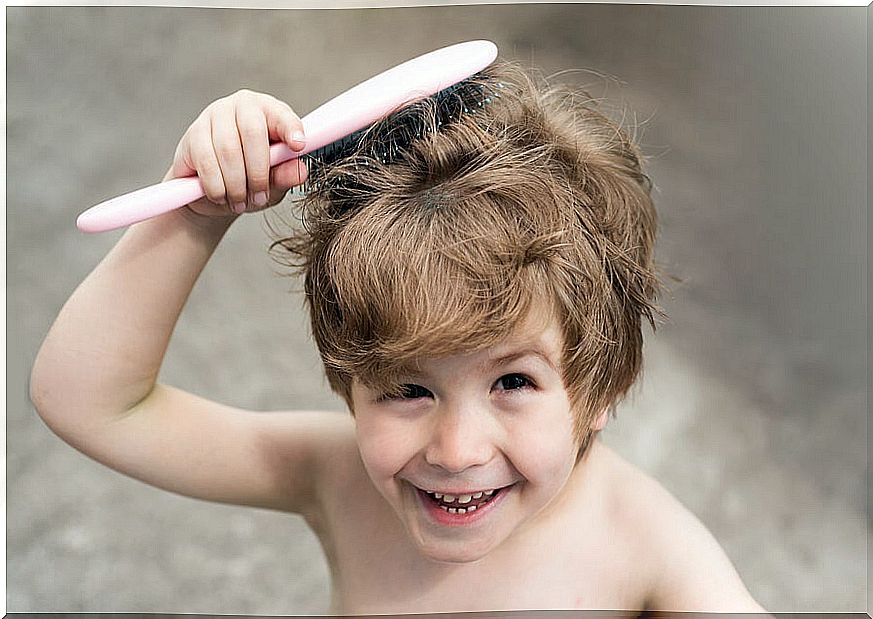Childhood Alopecia: Causes And Types
Childhood alopecia is excessive hair loss that children under 12 years of age can experience. At first, the problem tends to go unnoticed, as many parents see hair loss as a normal symptom of the growing season.
However, in some cases it tends to be noticeable, especially since the volume of the mane decreases drastically or, it is even possible to see bald areas. What are your causes? How is it classified? In this space we detail the most relevant aspects of this condition.
What is the cause of infantile alopecia?
According to information published in the American Hair Loss Association , childhood alopecia corresponds to 3% of all visits to the pediatrician in countries like the United States. For many it is a worrying issue, not only because of its possible relationship with health problems, but also because of the emotional impact on the child.
Fortunately, in most cases it is a temporary problem and is usually resolved with the proper intervention of the professional. However, to determine the best treatment, it is first advisable to make a diagnosis. That is, it is necessary to establish what is the cause of alopecia and in what form it is presenting.
In many cases, alopecia in children is the result of infectious processes in the scalp or by genetic factors. However, there are other possible triggers that could explain it. These include the following:
- Diseases : hypothyroidism, lupus erythematosus, childhood cancer, among others.
- Metabolic disturbances
- Nutritional deficit (zinc or iron deficiency, for example).
- By traction.
- Emotional (parental divorce, bullying, etc.).

How is infantile alopecia classified?
Childhood alopecia is generally divided into scarring and non-scarring. In the former, there is a destruction of the follicle and, consequently, there is a permanent and non-reversible effect. Meanwhile, in the latter the effect is reversible. What are the types of pediatric alopecia?
Occipital alopecia
As detailed in an article published in the Annals of Dermatology , it occurs in the first months of life due to the evolution of the follicular cycle that develops in the fetal and neonatal period.
In the 20th week of gestation, the scalp already has follicles in the growth stage, which with the passing of the months are entering the fall stage. It is at the moment of birth where the fall is observed abruptly. It does not need treatment, the hair will repopulate the area by itself.
Congenital triangular alopecia (CTA)
It begins in the uterus. It is characterized by the presence of a triangular plaque that does not have hair, in the temporal region of the scalp, on one or both sides. Hair loss does not spread to other regions. It is permanent, that is, it has no treatment.
Telogen and anagen effluvium
Children with this type of problem suffer from abundant hair loss. It is generally related to the following conditions:
- Endocrine diseases.
- Chronic diseases.
- Deficit states.
- Chemotherapy.
- Drugs.
- Surgical interventions.
- Intense fever
- Vaccination.
The treatment lies in diagnosing the cause that originated it and solving it. They are the most common variant of diffuse alopecia in children.
You may be interested: Telogen effluvium: causes and treatments
Alopecia areata
It is a chronic inflammatory process that has its immune origin. Hair is shed by the abrupt arrest of the follicle in certain areas, either on the head or on the body (such as legs or arms).
In general, they start before the age of 20 and have treatment. Its main cause is emotional tensions or moments of intense stress, such as exam periods, some type of emotional and physical abuse of children, or divorce of the parents.

Infantile traction alopecia
Pigtails, braids or very tight hairstyles cause hair loss in girls. It is produced by continuously pulling the hair in certain areas. In some cases, it becomes irreversible. It is recommended to avoid creating tension in the hair and leaving it relaxed and free.
Trichotillomania alopecia
Caused by pictures of severe anxiety, the child tends to pull out his hair, leading to alopecia. Treatment consists of psychological care in order to find out what caused it. It is considered a nervous tic , which is most often located in the nape and fringe region.
Read also: Trichotillomania: everything you need to know
Ringworm Alopecia
Caused by the presence of fungi. A localized area with hair loss is observed. It is spread by direct contact with another child, it can be in the nursery, by sharing a hairbrush or a towel. Home treatments should not be implemented, the dermatologist is the one who will indicate the appropriate medication.
Alopecia due to cancer treatments
It is not only seen on the head, but also on the face and body. It is recommended not to use remedies and wait until the oncological treatment is finished for that hair to return.
Childhood alopecia: what else should you know?
In general, each type of alopecia is more common in a certain age group.
- Occipital and triangular alopecia, in babies or young children.
- Telogen and anagen effluvia, trichotillomania, tumors, ringworms, and alopecia areata in late childhood or adolescence.
In any case, the ideal is to go to the pediatrician or dermatologist to obtain a proper diagnosis. The professional, once the origin of the alopecia is determined, will be the one to decide what the therapeutic options are.









